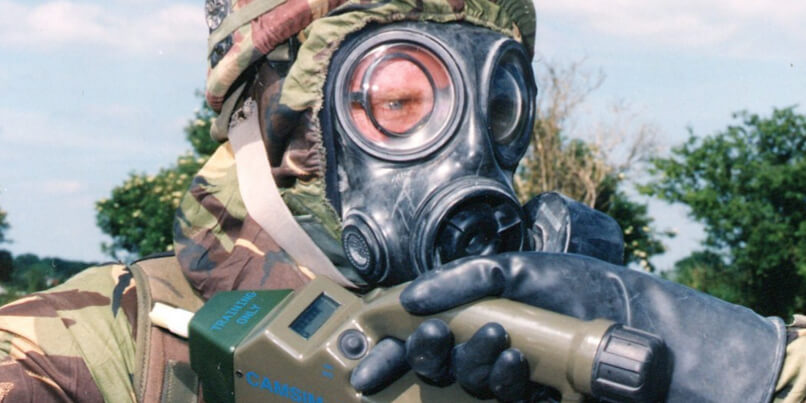 Argon Electronics will be exhibiting alongside our Indian partner, Strongfield Technologies Pvt., at the Aero India Show taking place at the Yelehanka Airforce Station in Bengaluru, Karnataka, 20th to 24th February 2019.
Argon Electronics will be exhibiting alongside our Indian partner, Strongfield Technologies Pvt., at the Aero India Show taking place at the Yelehanka Airforce Station in Bengaluru, Karnataka, 20th to 24th February 2019.
The Aero India Exhibition has been held every two years since 1996, and regularly attracts in excess of 60,000 business visitors and 100, 000 general visitors over the duration of the show.
Argon has been at the forefront of CBRNe and hazardous material simulation design for in excess of twenty-five years, while Strongfield has more than thirty years of experience providing specialist technology-based products to the aerospace, aviation, automotive and engineering sectors.Together we will be exhibiting a wide selection of CBRNe training systems that support Armed Forces training in contamination avoidance, monitoring and control, reconnaissance and search and survey.
Simulators for Chemical Hazard Detection
Among the detector devices on display during the show will be Argon's CAMSIM CAM Chemical Hazard Detection Simulator which acts as a high-fidelity simulator system for the Smiths Detection Chemical Agent Monitor (CAM).
Being able to conduct exercises that have little (or no) impact on the environment, or on the health and safety of personnel, is one of the prime drivers behind the use of simulators in training scenarios.
The CAMSIM simulation training system addresses this requirement by responding to electronic sources that simulate the effects of chemical vapors, toxic industrial chemicals (TICs) and false positives - resulting in zero environmental or health implications.
The simulator further aids training goals by simulating many of the common conditions or environments that can be encountered in live incidents - from the effects of wind direction and temperature to the depletion of batteries, contamination of nozzles and confidence testing procedures.
Multi-detector and multi-substance training
The CAMSIM has full compatibility with a wide range of other Argon simulator products including the AP2C-SIM, AP4C-SIM, the LCD-SIM series and the RAID-M-SIM, which means multi-detector and multi-substance training can take place within the same scenario. It has also been designed to work seamlessly with the PlumeSIM system to facilitate the provision of instrumented, collective, wide-area training scenarios.
A simple Instructor Remote Control (IRC) ensures that instructors retain full control of the exercise, and of each individual CAMSIM simulator. This can include determining the degree of residual contamination and using the remote to simulate the effects of persistency.
The ability to be able to monitor and review student error is widely recognised as a vital ingredient for successful learning. With this in mind, the CAMSIM is able to maintain a record of the trainee's set-up, and use of, the detector.
This provides the instructor with the ability to check that all procedures have been correctly followed. In the event that any mistakes are made, as they undoubtedly will in training scenarios, then these errors are stored and can then be displayed and discussed at the conclusion of the exercise.
To view the CAMSIM system, and the many other Argon products that will be on show at Aero India 2019, please stop by our booth - Stand A3 1F - where we will be delighted to answer your questions.
Business visitors will have access to the exhibition area on the 20th, 21st and 22nd of February, while general visitors can gain access on the 23rd and 24th of February.




